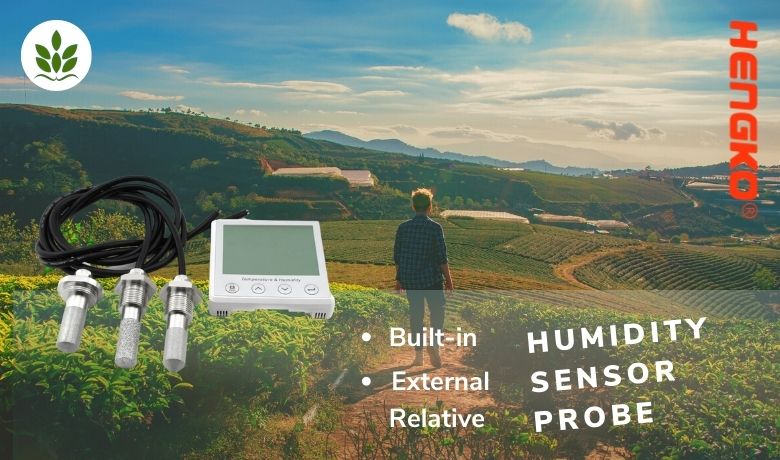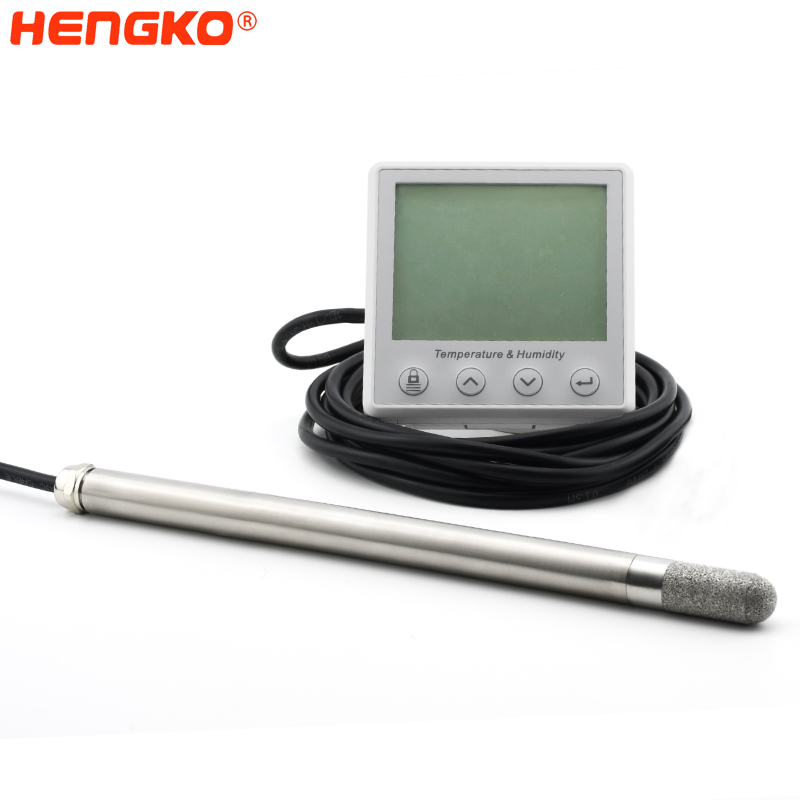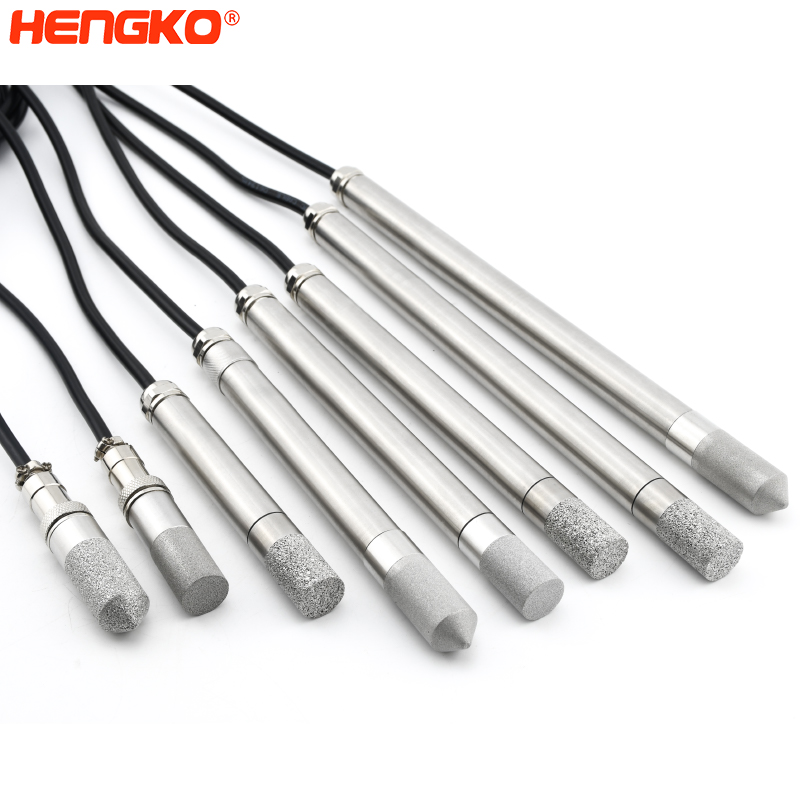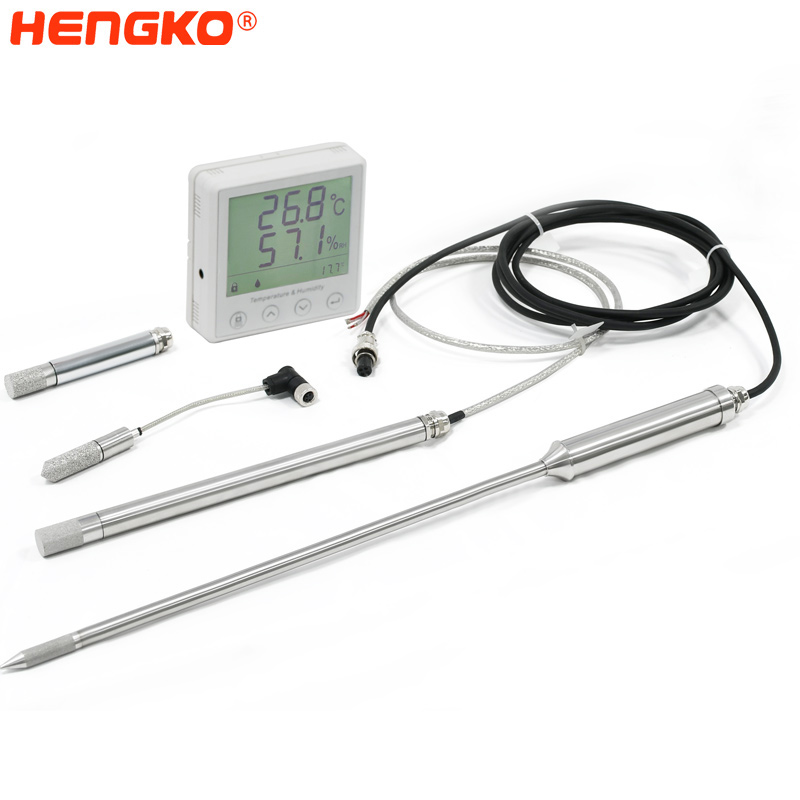
Temperature and humidity probe is mainly used to convert and display the temperature and humidity value to the humidity detector or computer. The function of the built-in humidity sensor probe and external relative humidity probe is entirely different.
1. Built-in Humidity Probe
Built-in humidity probe is designed to insert the temperature and humidity transmitter, saves the occupying space greatly, suitable for crawl space and some condition that needs to install lots of RH/T sensor in fixed point. Built-in humidity probe has advantage of low power consumption, reduce products loss and the effect of the of pollution affecting humidity sensor.
Features
A built-in humidity sensor probe is a device that measures the relative humidity (RH) of the surrounding environment.
Here we listed some features of a typical built-in humidity sensor probe, please check :
1. Accuracy:
The accuracy of a humidity sensor probe is an important factor to consider. A high-quality probe will typically have an accuracy of +/-2% RH or better.
2. Range:
The range of a humidity sensor probe refers to the minimum and maximum RH levels it can detect. Most probes can detect RH levels ranging from 0% to 100%.
3. Response time:
The response time of a humidity sensor probe is the time it takes to detect changes in the RH level. A fast response time is important in applications where humidity levels can fluctuate quickly.
4. Calibration:
Like any measurement device, a humidity sensor probe needs to be calibrated periodically to ensure accurate readings. Some probes come with built-in calibration features, while others require manual calibration.
5. Size and design:
Humidity sensor probes come in a range of sizes and designs to fit different applications. Some are small and designed for use in compact devices, while others are larger and more robust for use in industrial settings.
6. Output signal:
A humidity sensor probe may output an analog or digital signal, depending on the application. Analog output is often used in simpler systems, while digital output is preferred in more complex systems.
7. Compatibility:
The compatibility of a humidity sensor probe with different types of equipment and systems is important to consider. Some probes may be designed to work with specific devices or software, while others are more versatile and can be used with a range of systems.
HENGKO industrial temperature humidity transmitter has advantage of high measurement accuracy, high sensitivity, good stability, wide measurement range, LCD display, rapid response, zero drift and other features. Online temperature and humidity monitor makes it suitable all kinds of workshop, cleanroom, cold chain, hospital, laboratory, computer room, building, airport, station, museum, gym and other occasion that needs to monitor and control indoor ambient temperature and humidity.
For external relative humidity probes, it has more widely measuring range than built-in humidity probe. And we can select different types humidity probe according to the measuring environment. Such as HENGKO provides flange mounted temperature and humidity sensor probe with various length extension tube Ideal for when an application demands the removal of a sensor without interrupting the process.
2. External Relative Humidity Probe
Split-type External Relative Humidity Probe can be used in HVAC duct and crawl space. HENGKO humidity sensor enclosures are made by sintering 316L powder material in high temperature. The have excellent performances of smooth and flat internal and external tube wall, uniform pores and high strength. The stainless steel sensor shell dimensional tolerance of most models is controlled within 0.05 mm.
The built-in humidity sensor probe and external relative humidity probe have their own advantages, according to their own use environment and measurement needs to targeted selection, will not go wrong.
Main Features
An external relative humidity probe is a device that is used to measure the relative humidity of the surrounding environment, but it is separate from the main equipment it is measuring. Here are some features of a typical external relative humidity probe:
1. Accuracy:
The accuracy of a humidity probe is an important factor to consider. A high-quality probe will typically have an accuracy of +/-2% RH or better.
2. Range:
The range of a humidity probe refers to the minimum and maximum RH levels it can detect. Most probes can detect RH levels ranging from 0% to 100%.
3. Response time:
The response time of a humidity probe is the time it takes to detect changes in the RH level. A fast response time is important in applications where humidity levels can fluctuate quickly.
4. Calibration:
Like any measurement device, a humidity probe needs to be calibrated periodically to ensure accurate readings. Some probes come with built-in calibration features, while others require manual calibration.
5. Size and design:
External humidity probes come in a range of sizes and designs to fit different applications. Some are small and designed for use in compact devices, while others are larger and more robust for use in industrial settings
6. Cable length:
External humidity probes come with a cable that connects the probe to the main equipment. The length of the cable is an important factor to consider, as it determines the distance the probe can be placed from the main equipment.
7. Compatibility:
The compatibility of a humidity probe with different types of equipment and systems is important to consider. Some probes may be designed to work with specific devices or software, while others are more versatile and can be used with a range of systems.
8. Durability:
External humidity probes may be exposed to a range of environmental conditions, so they need to be durable and able to withstand harsh conditions.
9. Output signal:
A humidity probe may output an analog or digital signal, depending on the application. Analog output is often used in simpler systems, while digital output is preferred in more complex systems.
10. Additional features:
Some humidity probes may include additional features, such as temperature measurement or the ability to measure other environmental parameters.
So for Humidity Sensor Probe, HENGKO supply Special OEM Service, to Customize Special Requires Probe to Protect Your Sensor. so of still have any questions or Got New Sensor need to OEM
Sensor Protect, You can think about the Porous Sintered Metal Sensor Housing to Protect Your Sensor Better. You are welcome to contact us by email ka@hengko.com, we will send it back to
to you within 48-Hours.
Post time: Nov-16-2021








